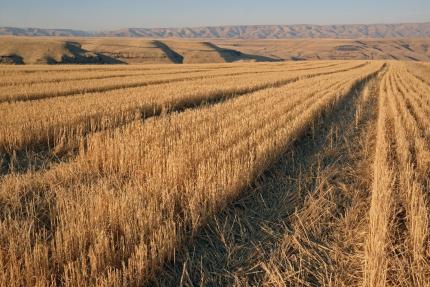
Agriculture is an integral part of the management practices on WDFW lands and provides multiple benefits for wildlife, habitat, and the local economy. It is an effective way to enhance forage and cover for wildlife, and provide weed and soil erosion control.
Department staff members negotiate leases, develop farm plans in collaboration with lessees, and oversee farming activities on leased sites to ensure the effects are consistent with management objectives. These leases are designed to meet the needs of the agency, wildlife, farmer, and community.
Planted crops include wheat, alfalfa, and barley, as well as others. Department staff members work with the lessees to determine which crops are best for each agricultural lease. In certain areas, specific wildlife goals may be included in the decision, such as increased food and cover for upland birds, increased diversity on the landscape, or improved forage for deer.
Farming also provides economic benefits to local communities, and state revenue generated by agriculture contributes to the stewardship of WDFW wildlife areas. It also covers costs related to habitat protection and restoration, weed control, and maintenance for roads, trails, campsites, toilets, and signs.